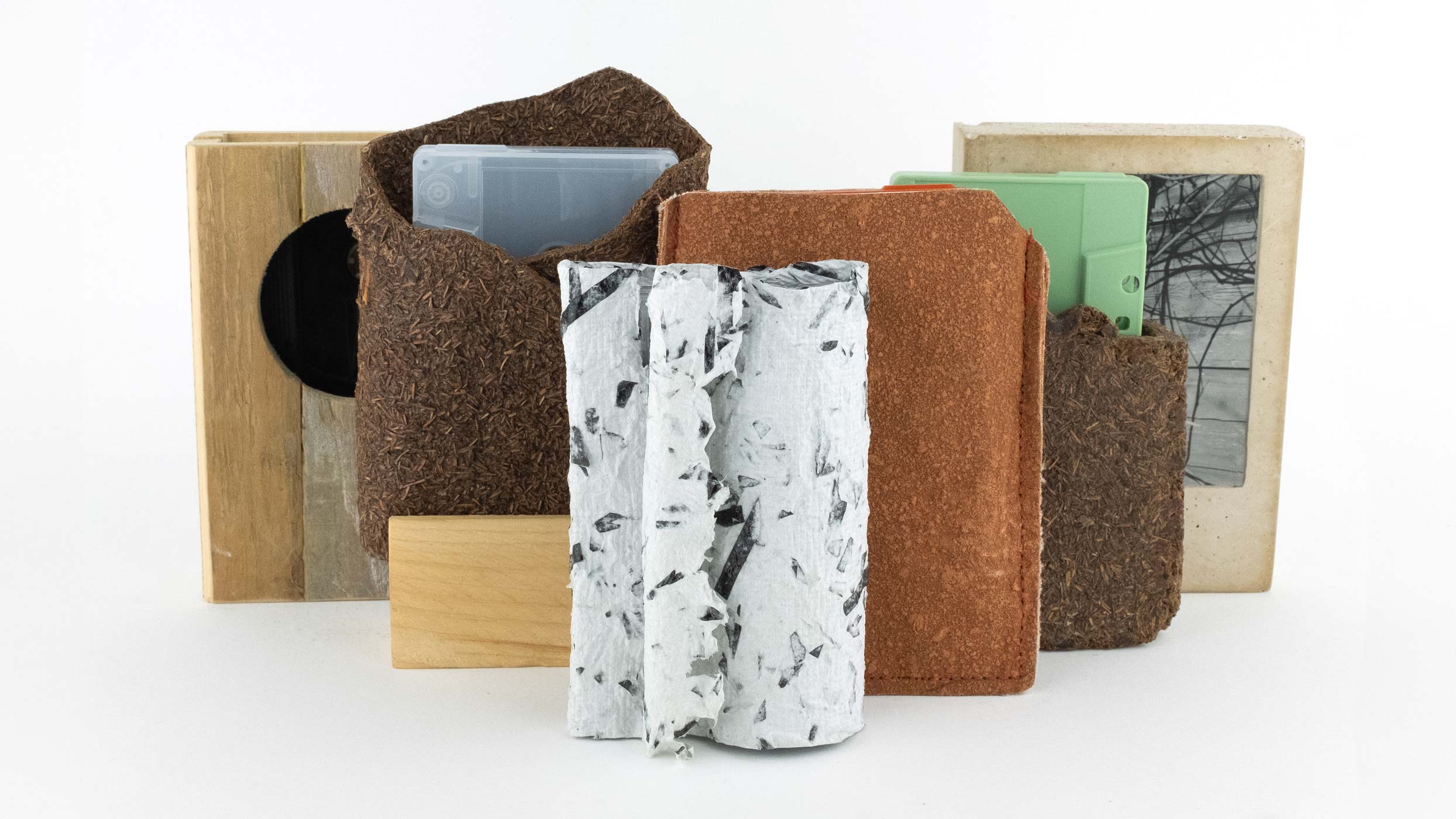
Cassette releases from 2020-2023.
info
MATERIALS:
various, based on the release and its story
Releases:
2021 cc05 Extempore - reflection
2022 cc06 Andrew Black - hypnopompia
2022 cc07 The Never Never - Horizontal Vertical
2022 cc09 bahía mansa - costa documental
2022 cc10 Extempore - Memories
2023 cc13 Andrew Black - Crawl
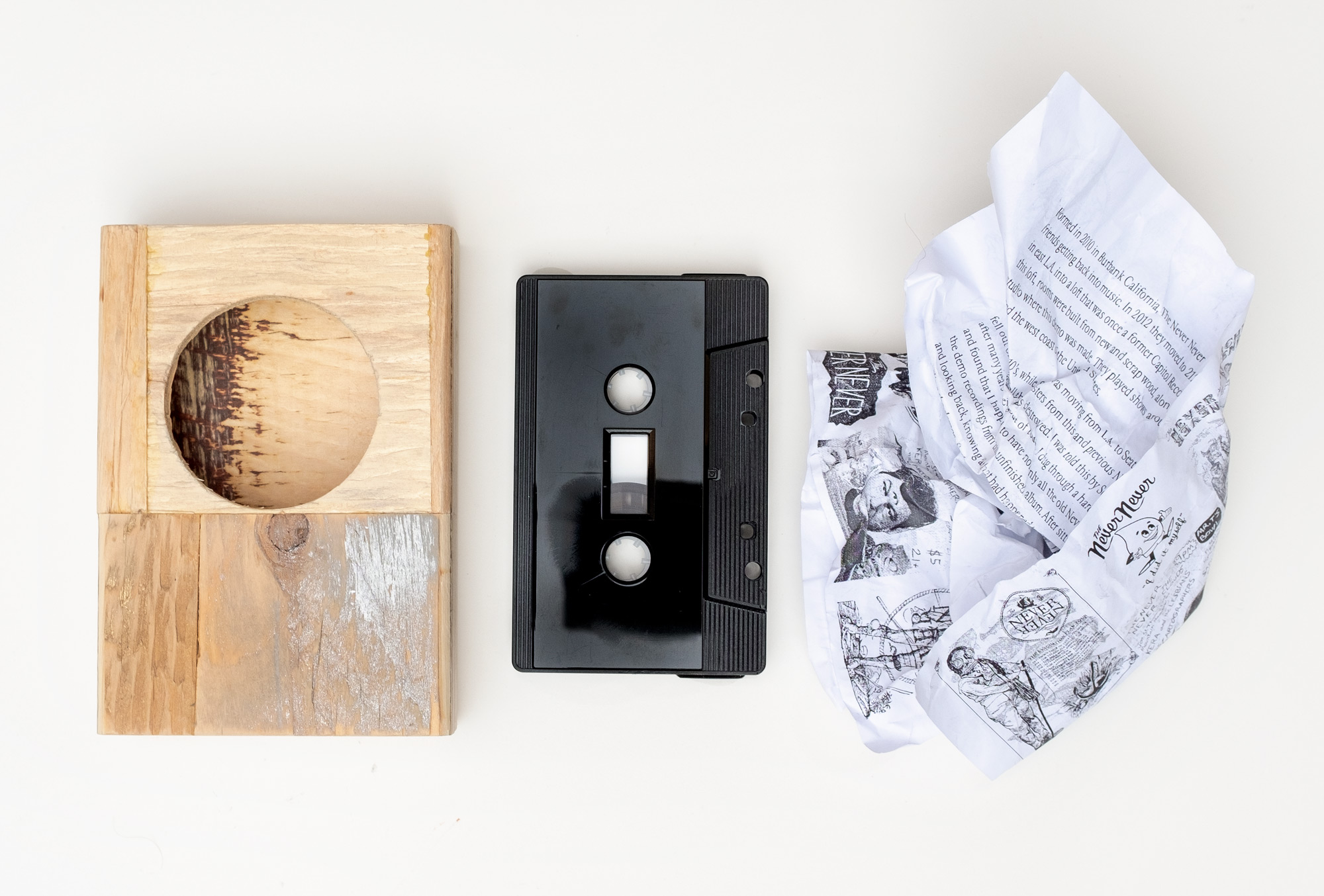
The Never Never - Horizontal Vertical, recycled plastic cassette in scrap wood box.
Description
As a lifelong collector of music, I have always been curious why in every physical format, we store music in our homes in the same way. Like books, filing them away to only see the spine for when we choose to engage with them. In its current state, physical music is only really being consumed by "collectors" so why don’t we blur the lines between music and the art object?
Colony Collapse originally began out of the desire to put out a record by a musician I had been working with for years, but after a pause, it was reborn in a new form. At its core, it is a way for me to collaborate with artist in a way that I have not seen executed, and have been wanting more of. It is a way to take the inspiration behind creating music and letting that dictate the physical materiality of the release. It is a way to turn something that would normally be filed away, into an object of display that has its own life beyond being just an album.
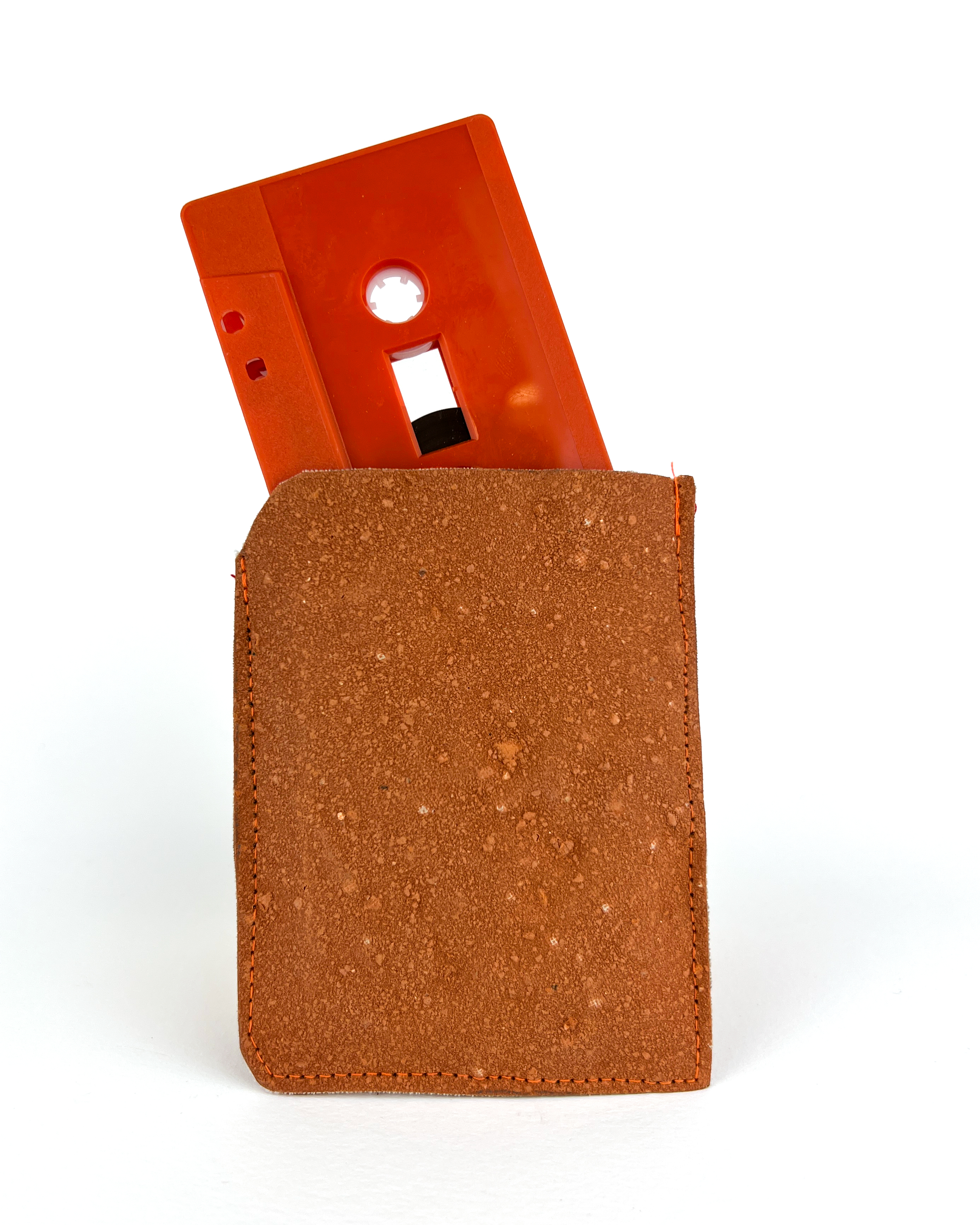
Extempore - Memories, cassette in biodegradable "leather" sleeve made from 100 year old brick and seaweed biopolymers.
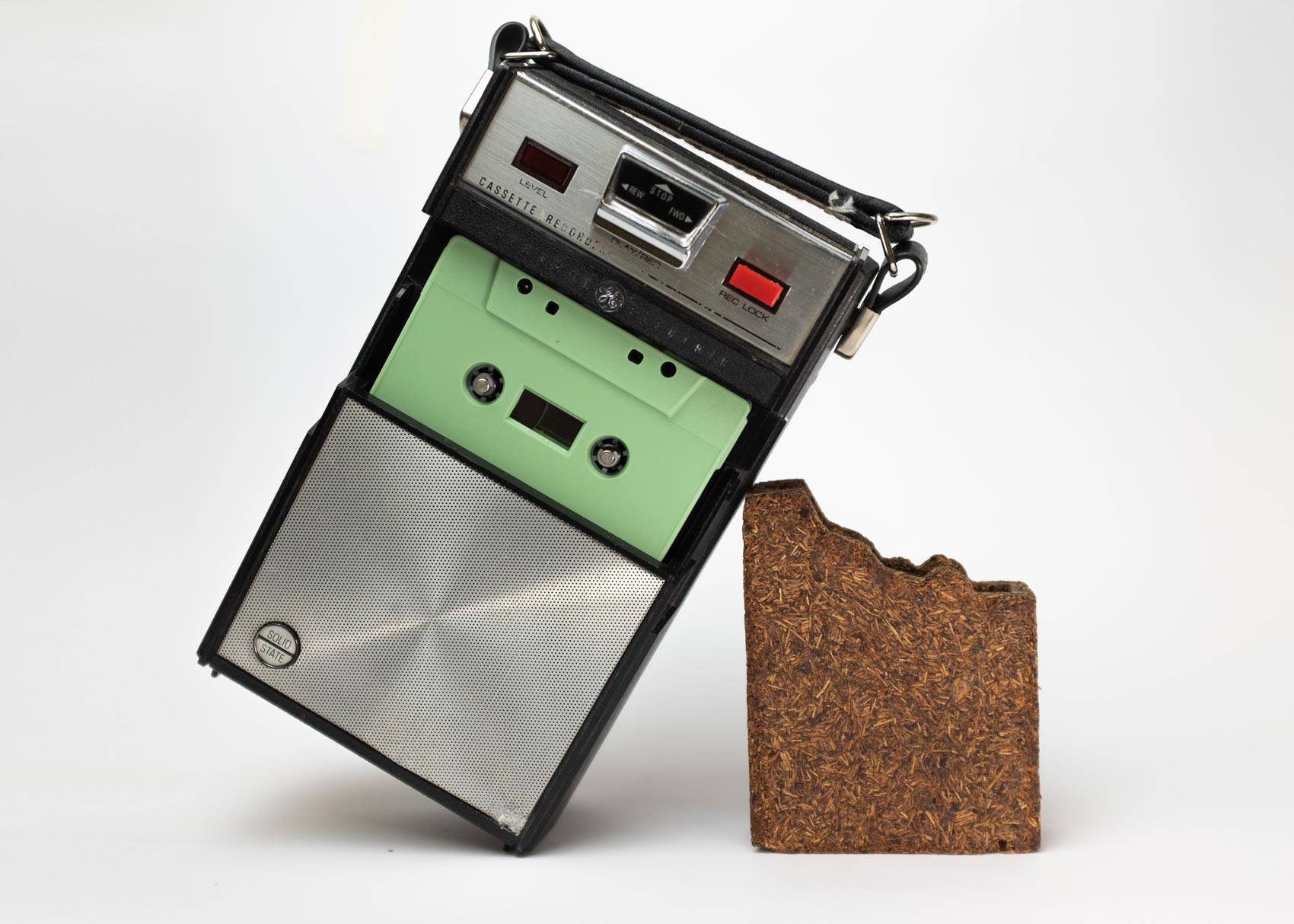
Andrew Black - Hypnopompia, Pintria (pine needles, pine resin, starch based biopolymer).
With each release, I take the inspirations behind why an album was made, where it was made, and the background of the person/people making it, to develop a material specific to that story. From there a small sculpture is made of this material making the physical release of the album an object that can live on your shelf in a way that most music can not. Through these explorations I am able to use one of the biggest influences in my life, music, and let it contribute to my work in new and inspiring ways.
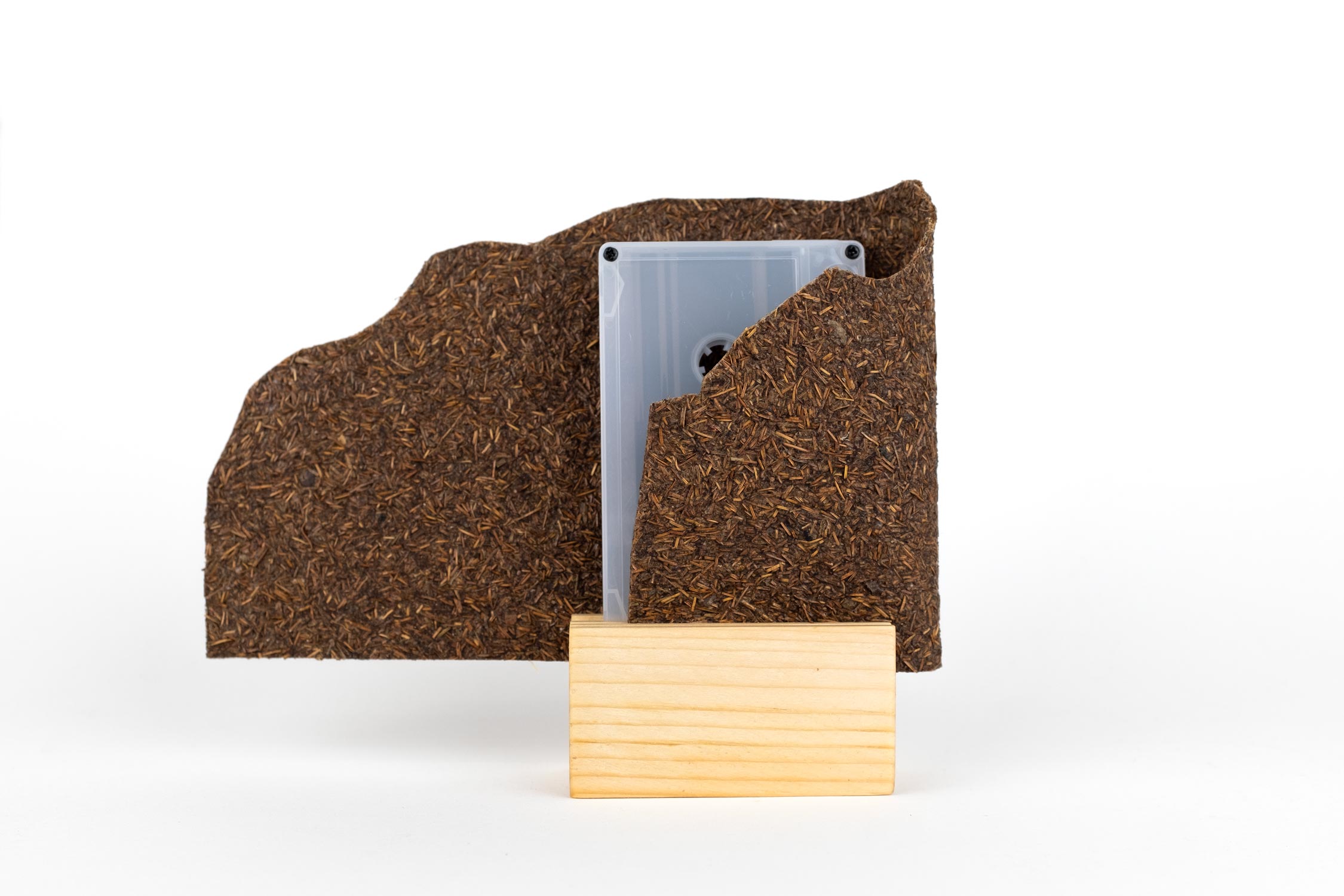
Bahía Mansa - Costa Documental, dead pine needle and seaweed based biopolymers, pine wood.
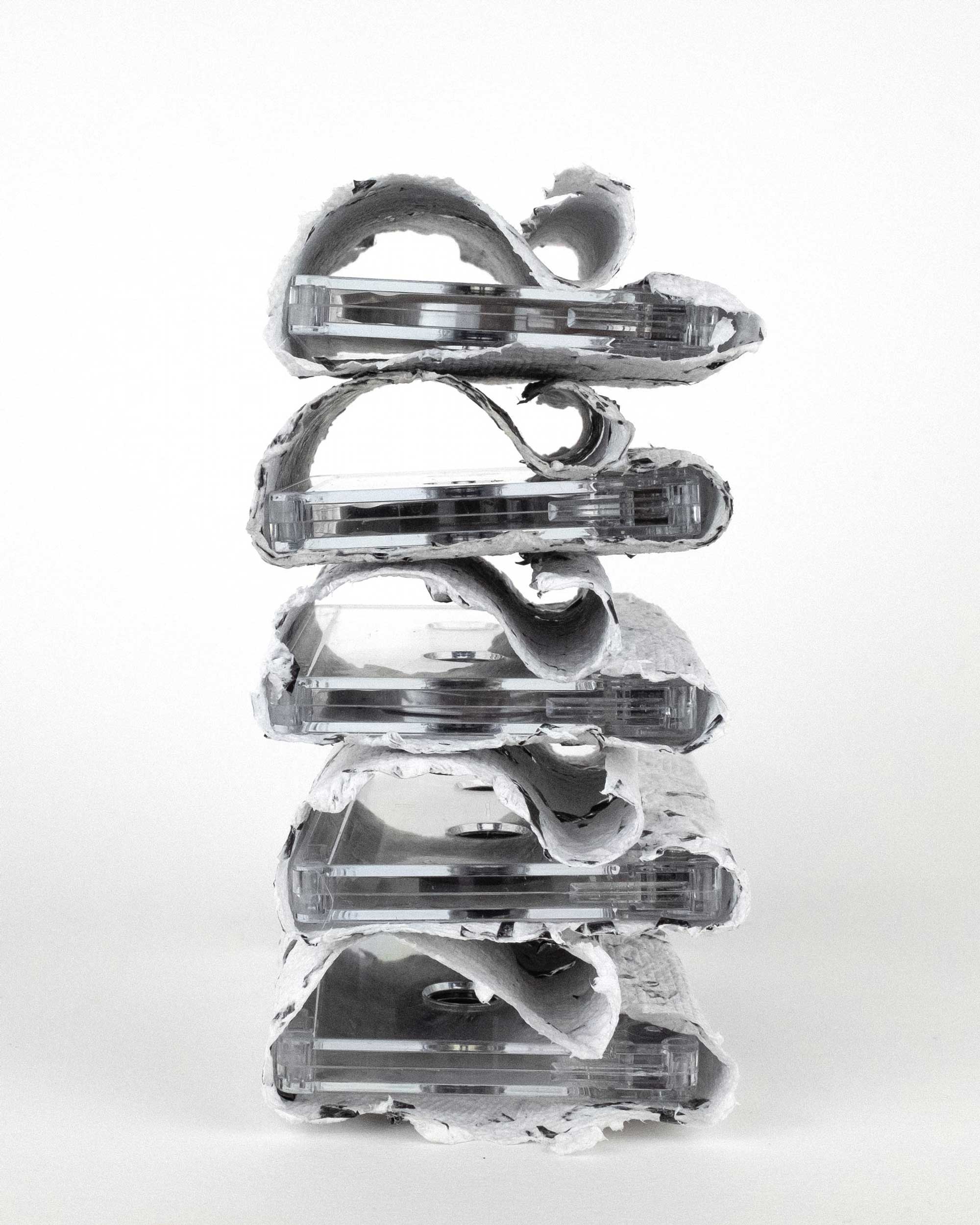
Andrew Black - Crawl, recycled paper and used magnetic tape.
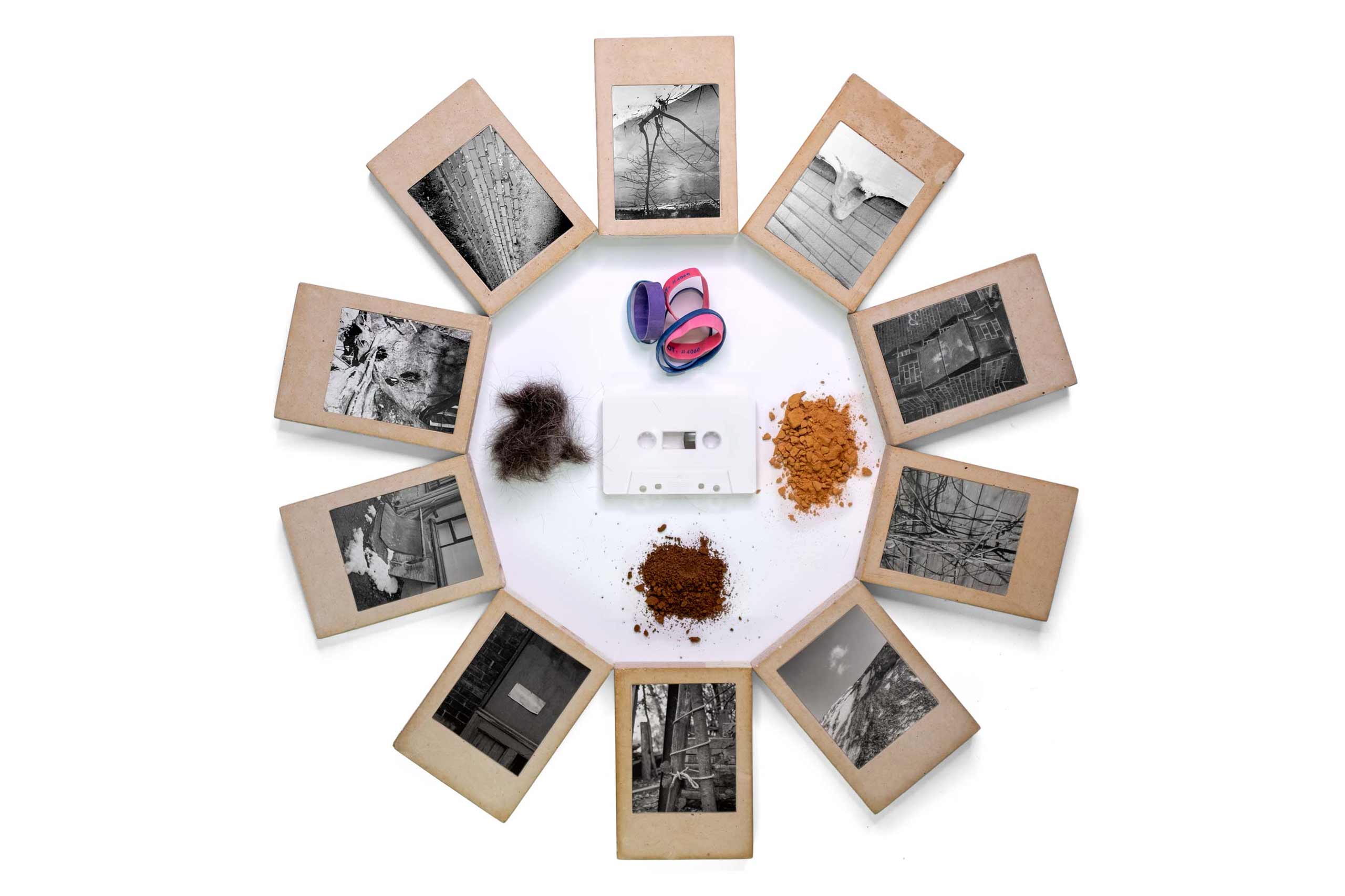
Extempore - Reflection, housed in a sculpture made from used coffee grounds, construction debris, human hair, and gypsum. Featuring one of 10 photos by Christian Ordoñéz.

Cassette releases from 2020-2023.
info
MATERIALS:
various, based on the release and its story
Releases:
2021 cc05 Extempore - reflection
2022 cc06 Andrew Black - hypnopompia
2022 cc07 The Never Never - Horizontal Vertical
2022 cc09 bahía mansa - costa documental
2022 cc10 Extempore - Memories
2023 cc13 Andrew Black - Crawl

The Never Never - Horizontal Vertical, recycled plastic cassette in scrap wood box.
Description
As a lifelong collector of music, I have always been curious why in every physical format, we store music in our homes in the same way. Like books, filing them away to only see the spine for when we choose to engage with them. In its current state, physical music is only really being consumed by "collectors" so why don’t we blur the lines between music and the art object?
Colony Collapse originally began out of the desire to put out a record by a musician I had been working with for years, but after a pause, it was reborn in a new form. At its core, it is a way for me to collaborate with artist in a way that I have not seen executed, and have been wanting more of. It is a way to take the inspiration behind creating music and letting that dictate the physical materiality of the release. It is a way to turn something that would normally be filed away, into an object of display that has its own life beyond being just an album.

Extempore - Memories, cassette in biodegradable "leather" sleeve made from 100 year old brick and seaweed biopolymers.

Andrew Black - Hypnopompia, Pintria (pine needles, pine resin, starch based biopolymer).
With each release, I take the inspirations behind why an album was made, where it was made, and the background of the person/people making it, to develop a material specific to that story. From there a small sculpture is made of this material making the physical release of the album an object that can live on your shelf in a way that most music can not. Through these explorations I am able to use one of the biggest influences in my life, music, and let it contribute to my work in new and inspiring ways.

Bahía Mansa - Costa Documental, dead pine needle and seaweed based biopolymers, pine wood.

Andrew Black - Crawl, recycled paper and used magnetic tape.

Extempore - Reflection, housed in a sculpture made from used coffee grounds, construction debris, human hair, and gypsum. Featuring one of 10 photos by Christian Ordoñéz.